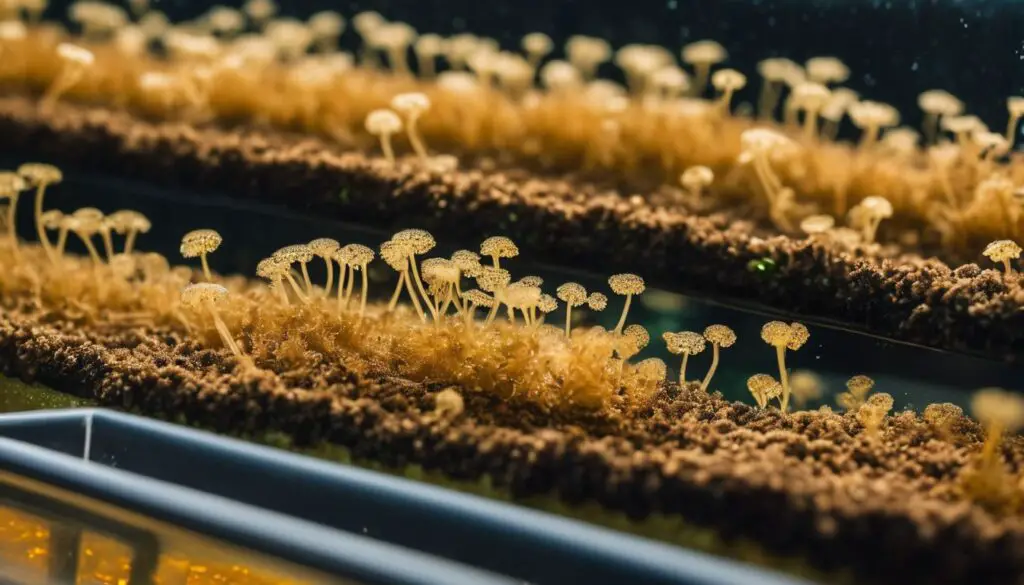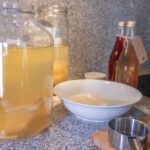Are you wondering how a flourishing aquaponics system can transform waste into plant nutrients? It’s all thanks to bacteria, the unseen heroes of this eco-friendly farming method. In this blog post, we’ll dive deep into the function these microorganisms play in converting fish waste into nutrient-rich food for plants.
What Role Do Bacteria Play in an Aquaponics System?
Bacteria in an aquaponics system serve the vital role of converting fish waste into plant-friendly nutrients. Specifically, nitrifying bacteria transform ammonia from fish waste into forms of nitrogen that plants can absorb, while heterotrophic bacteria break down dead plant matter and mineralize solid waste for plant nutrition. Monitoring and maintaining optimal conditions for these bacteria are essential for the system’s success.
Read on and discover the fascinating world behind successful aquaponics systems!
Key Takeaways
- Bacteria in an aquaponics system play a vital role in converting fish waste into plant food, helping both the fish and plants.
- Factors like high surface area, water pH, temperature, and dissolved oxygen are important for bacteria to thrive and turn fish waste into nutrients for plants.
- Regular monitoring of bacterial activity is crucial to maintain optimal conditions for growth and nutrient cycling in an aquaponics system.
- Heterotrophic bacteria break down dead plant matter and convert solid waste into essential nutrients for plant growth in aquaponics.
Nitrifying Bacteria and the Biofilter
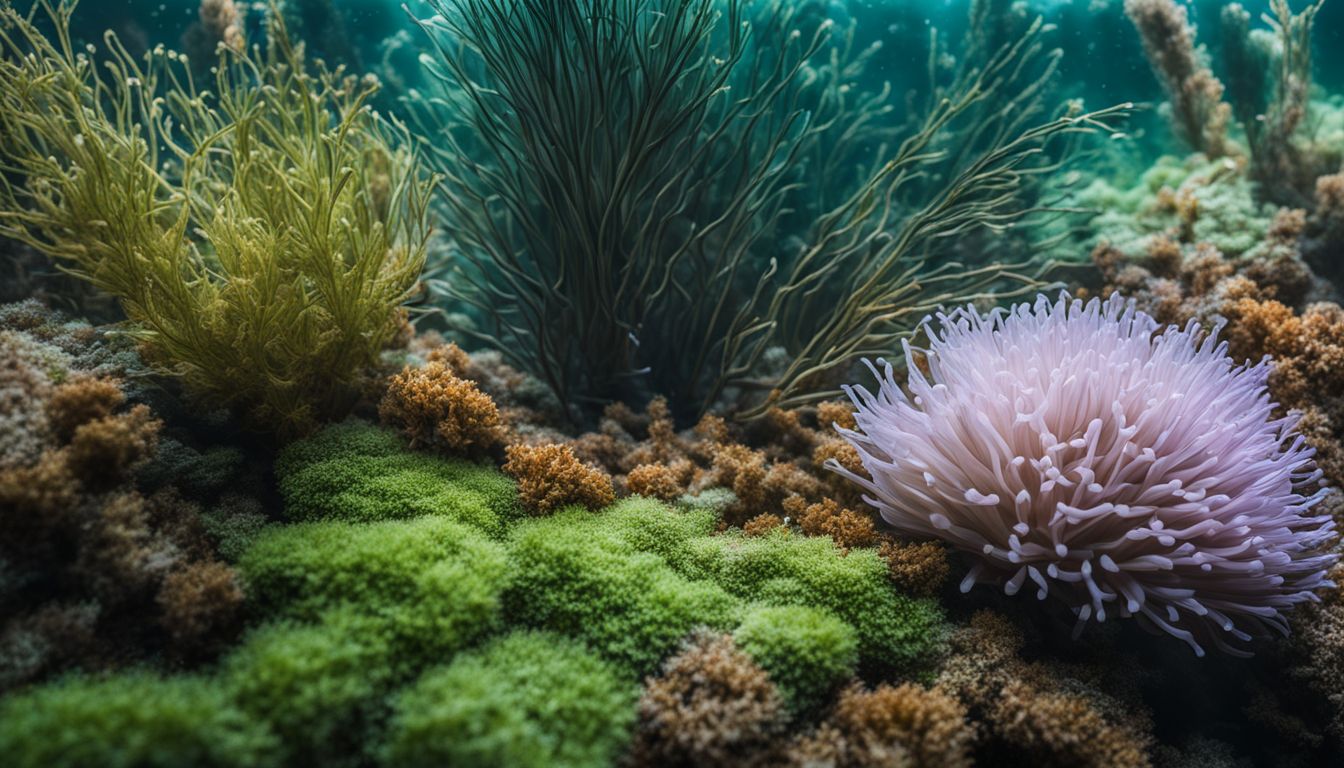
Nitrifying bacteria play a crucial role in converting fish waste into plant food, with the biofilter providing the ideal environment for their growth and activity.
Role in converting fish waste into plant food

Fish make waste. This waste is not good for them. But, some tiny life forms can help both fish and plants in an aquaponics system. These small helpers are nitrifying bacteria. They do something great with the fish waste — they turn it into plant food! Fish give out a lot of ammonia as waste.
Too much ammonia hurts the fish but the bacteria like it just fine and use this to make something that plants love: Nitrogen! Now, all that harmful fish waste gets changed into a yummy meal for plants.
Importance of high surface area, water pH, temperature, and dissolved oxygen
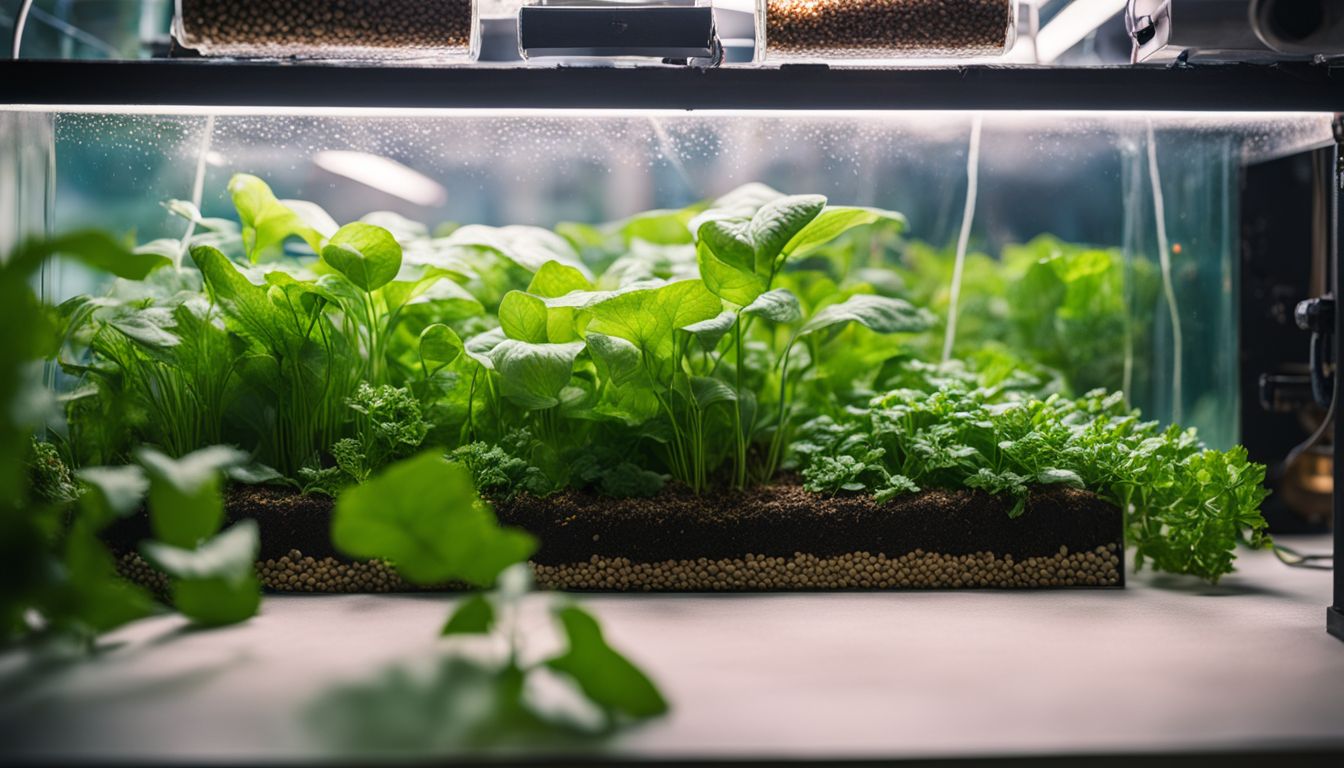 High surface area, water pH, temperature, and dissolved oxygen are important factors for the growth and activity of bacteria in an aquaponics system.
High surface area, water pH, temperature, and dissolved oxygen are important factors for the growth and activity of bacteria in an aquaponics system.
- Adequate surface area allows bacteria to colonize and thrive, increasing their efficiency in converting fish waste into plant food.
- The optimal water pH range (around 6.8 to 7.2) promotes bacterial activity and ensures a healthy environment for both fish and plants.
- Maintaining the right temperature (around 25-30 degrees Celsius) helps bacteria function optimally in breaking down waste.
- Sufficient dissolved oxygen levels are crucial for aerobic bacteria, which play a key role in nutrient conversion. Oxygen-rich water supports their growth and activity.
Monitoring bacterial activity
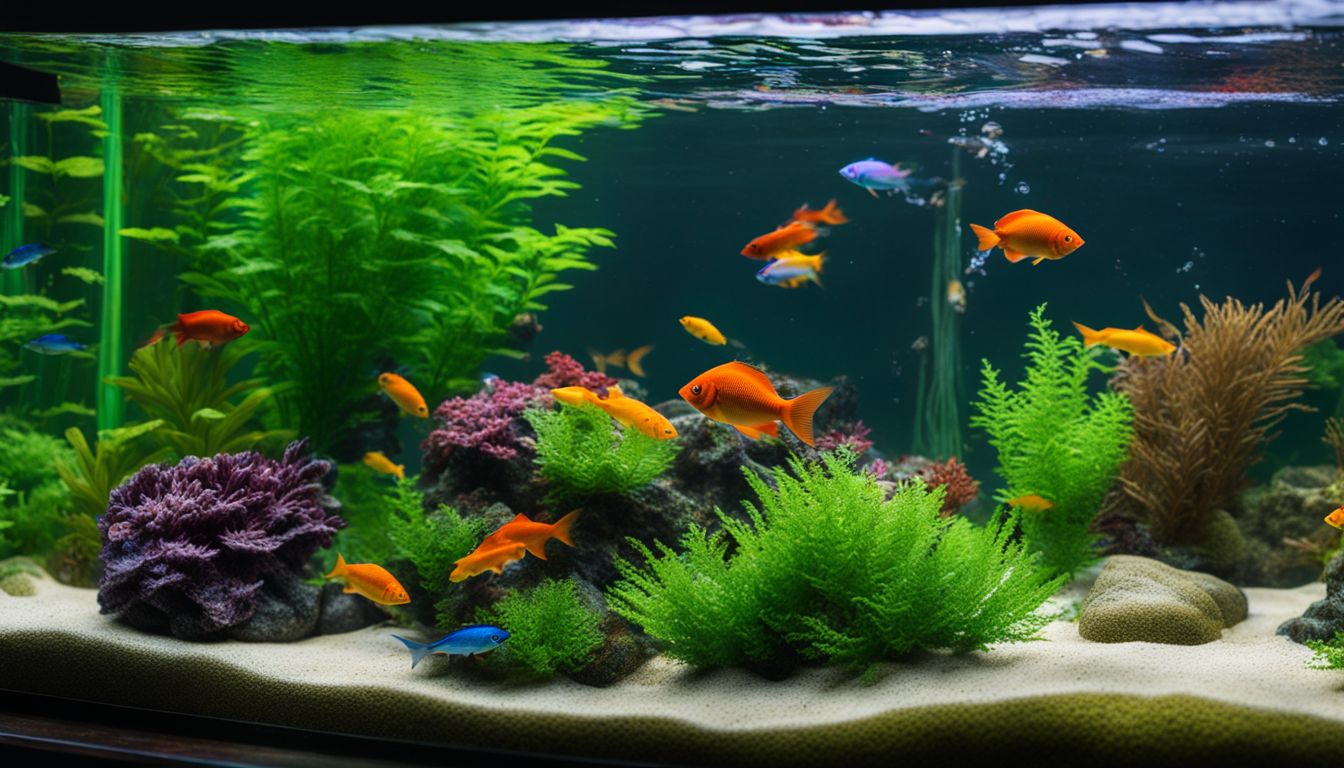
Monitoring bacterial activity is crucial in an aquaponics system to ensure the proper functioning of the microbiome. By regularly testing water parameters such as pH, temperature, and dissolved oxygen levels, we can assess the health and activity of bacteria.
We can also monitor ammonia and nitrate levels to gauge the effectiveness of nitrifying bacteria in converting fish waste into plant food. Regular monitoring allows us to make adjustments if needed to maintain optimal conditions for bacterial growth and nutrient cycling, promoting a thriving aquaponics system.
Heterotrophic Bacteria and Mineralization

Heterotrophic bacteria play a crucial role in aquaponics by breaking down dead plant matter and mineralizing solid waste to provide essential nutrients for plant growth.
Breaking down dead plant matter

Bacteria in an aquaponics system also play a vital role in breaking down dead plant matter. When plants in the system die or shed leaves, these bacteria help decompose them into smaller particles.
This process is important because it allows the nutrients from the dead plants to be recycled and made available for other plants to use as food. By breaking down this organic material, bacteria help maintain water quality and prevent it from becoming polluted with decaying plant matter.
Mineralizing solid waste for plant nutrients
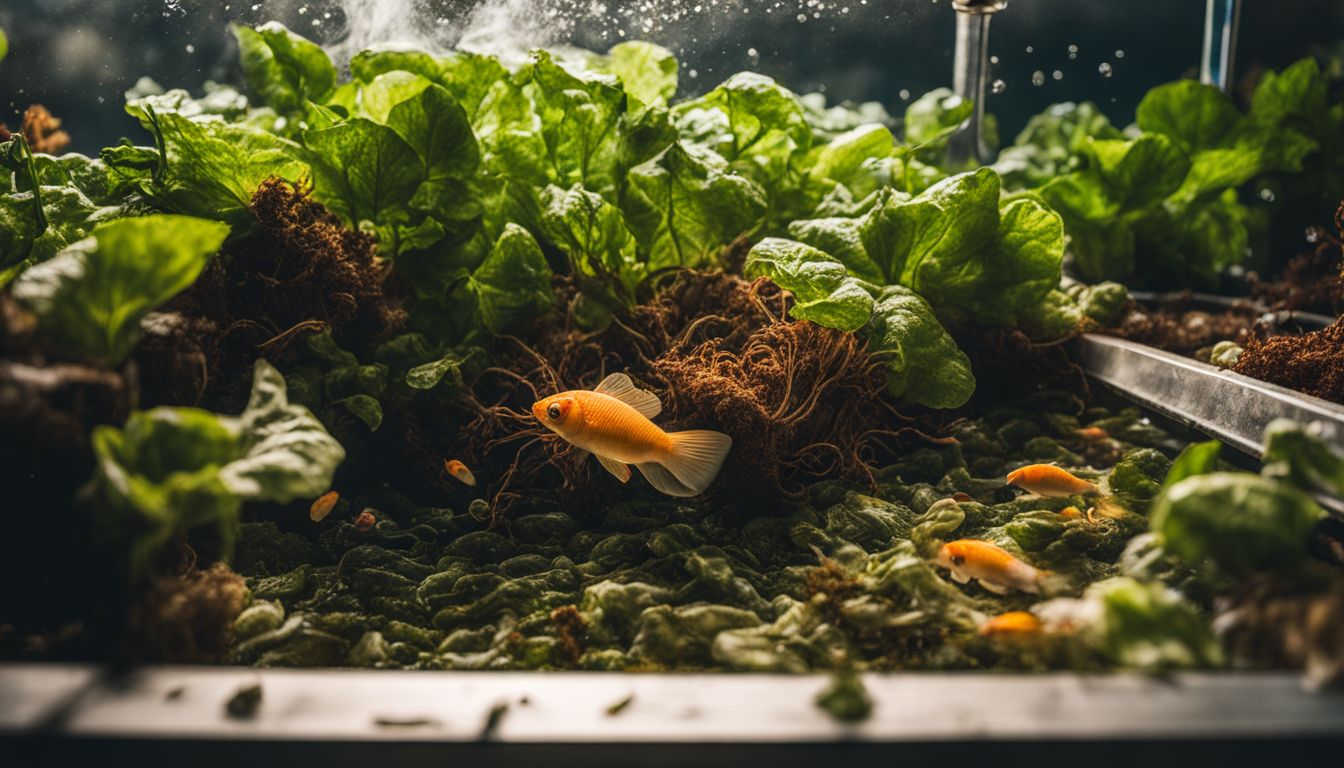 Heterotrophic bacteria in an aquaponics system play a crucial role in mineralizing solid waste, turning it into nutrients for plants. These bacteria break down dead plant matter and convert it into soluble micronutrients that can be absorbed by the plants.
Heterotrophic bacteria in an aquaponics system play a crucial role in mineralizing solid waste, turning it into nutrients for plants. These bacteria break down dead plant matter and convert it into soluble micronutrients that can be absorbed by the plants.
This process ensures that the waste produced by the fish is not wasted but instead becomes valuable food for the growing vegetables. By recycling and converting harmful waste, these bacteria contribute to water pollution reduction and support healthy plant growth in the aquaponics system.
Unwanted Bacteria in Aquaponics
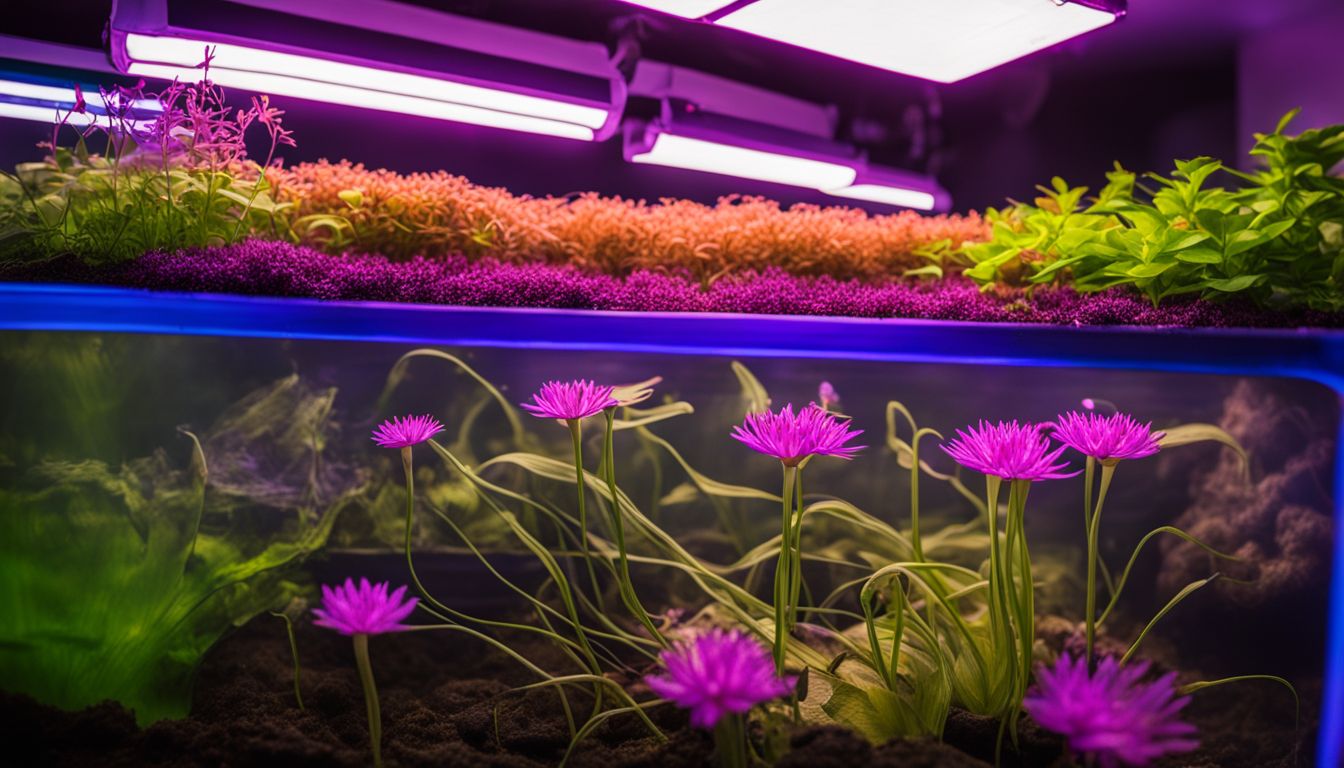
Unwanted bacteria in aquaponics can include sulphate reducing bacteria, denitrifying bacteria, and pathogenic bacteria that can disrupt the balance of the system and harm fish or plants.
Sulphate reducing bacteria

Sulphate reducing bacteria are unwanted bacteria that can cause problems in aquaponics systems. These bacteria convert sulphates into hydrogen sulfide, which is toxic to both fish and plants.
The presence of these bacteria can lead to the production of foul-smelling gases and a decrease in water quality. It is important for aquaponic system owners to monitor their systems regularly and take steps to prevent the growth of sulphate reducing bacteria, such as maintaining proper pH levels and ensuring adequate dissolved oxygen in the water.
Denitrifying bacteria
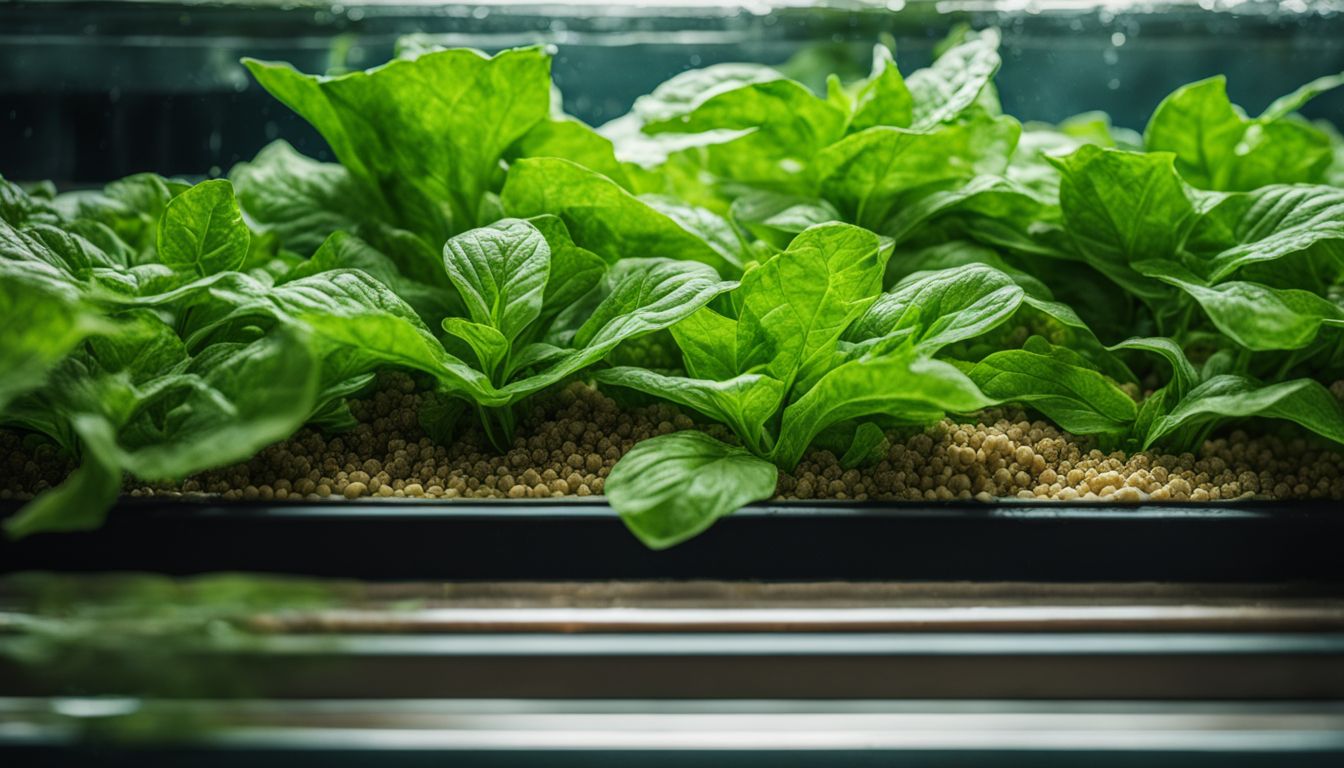 Denitrifying bacteria are another type of bacteria found in aquaponics systems. These bacteria play a crucial role in reducing the levels of nitrogen compounds in the water. Nitrogen is an essential nutrient for plants, but too much can be harmful to fish.
Denitrifying bacteria are another type of bacteria found in aquaponics systems. These bacteria play a crucial role in reducing the levels of nitrogen compounds in the water. Nitrogen is an essential nutrient for plants, but too much can be harmful to fish.
Denitrifying bacteria convert nitrates, which are produced from the breakdown of fish waste, into nitrogen gas, which is released back into the atmosphere. This process helps maintain proper water quality and prevents nitrogen buildup that could be harmful to both fish and plants.
By removing excess nitrogen from the system, denitrifying bacteria contribute to a healthier and more balanced aquaponics environment.
Pathogenic bacteria

Pathogenic bacteria are unwanted in an aquaponics system because they can harm the fish and plants. These harmful bacteria can cause diseases that spread quickly and damage the entire system.
It is important to regularly monitor water quality and maintain proper sanitation practices to prevent the growth of pathogenic bacteria. By ensuring a balanced ecosystem with beneficial bacteria, we can create a healthy environment for both fish and plants in an aquaponics system.
System Cycling and Starting a Biofilter Colony
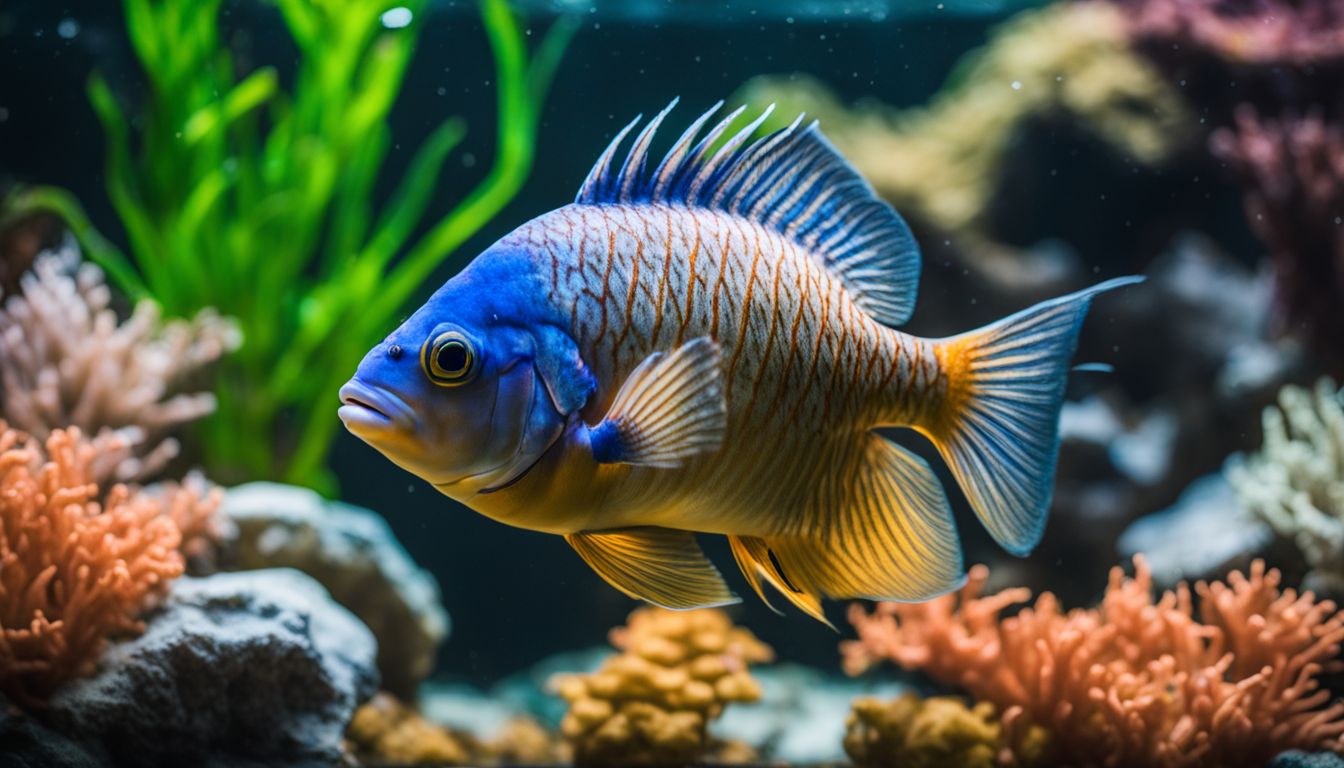
Establishing a healthy biofilter colony is crucial for the success of an aquaponics system. Discover how to properly cycle your system and encourage beneficial bacterial growth. Read more to ensure your plants thrive in this sustainable agriculture setup.
Adding fish and plants during the cycling process
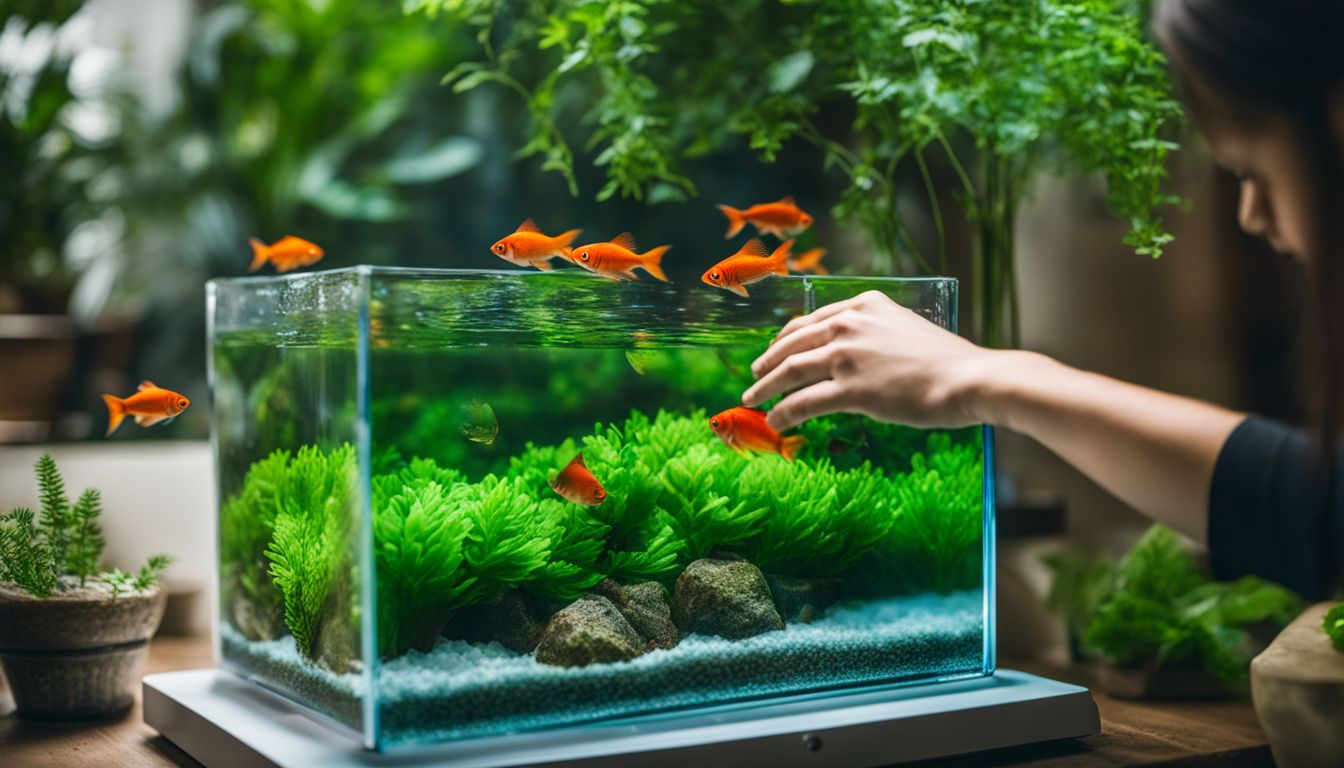
During the cycling process in an aquaponics system, adding fish and plants helps establish a healthy biofilter colony and promote bacterial growth. Here’s what happens:
- Fish waste provides ammonia, which is converted by nitrifying bacteria into nitrite and then nitrate.
- Nitrate is a nutrient that plants can absorb and use for growth.
- Adding plants during this process helps by absorbing excess nutrients and providing a surface for beneficial bacteria to grow on.
Establishing biofilms for beneficial bacteria growth
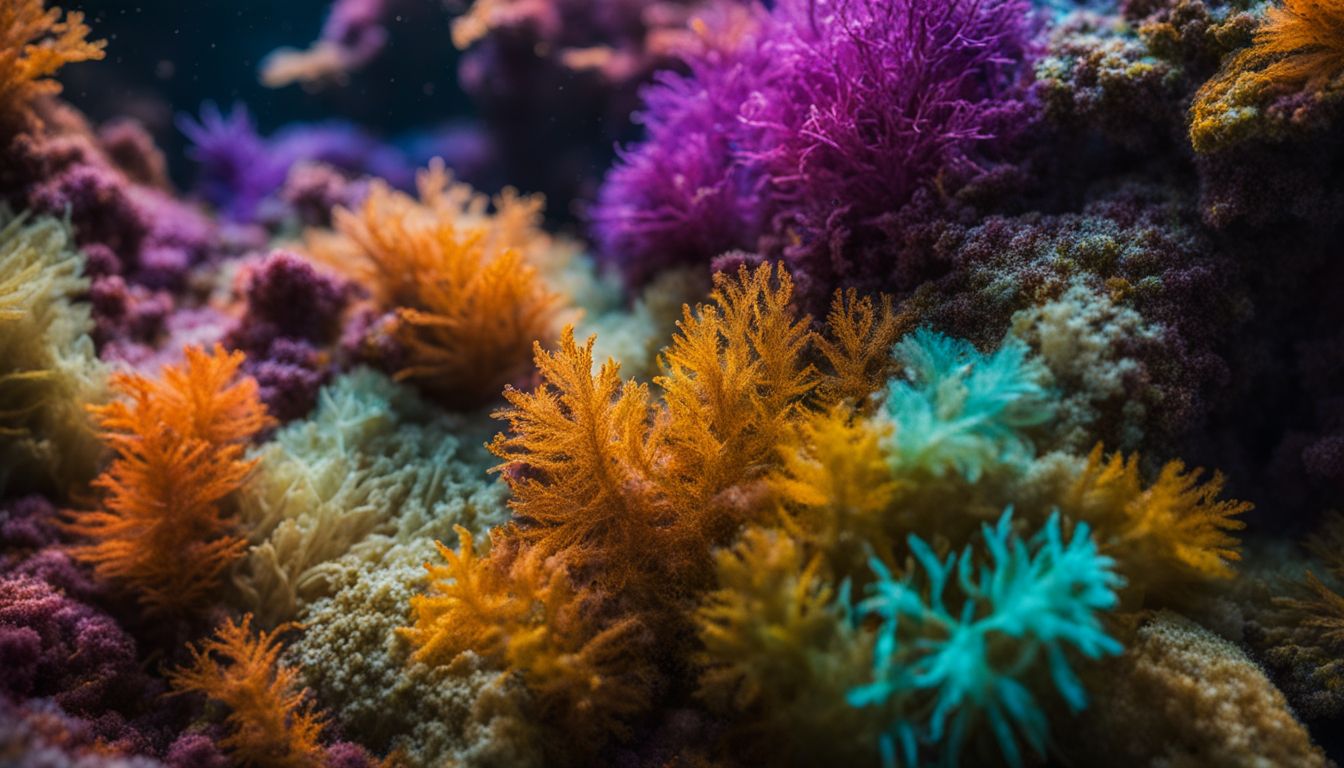
Biofilms are essential for the growth of beneficial bacteria in an aquaponics system. They provide a surface for bacteria to attach and form colonies.
- Biofilms create a protective environment for bacteria.to thrive.
- Bacteria within biofilms break down fish waste.and convert it into plant food.
- Biofilms help maintain the water quality by reducing harmful waste and pollutants.
- They also play a role in nutrient cycling, ensuring that plants have access to essential nutrients.
- Establishing biofilms is crucial during the cycling process of an aquaponics system.
- Adding fish and plants helps initiate the growth of biofilms and beneficial bacteria.
- These biofilms contribute to the overall health and success of both fish and plants in aquaponics.
Conclusion

In conclusion, bacteria play a crucial role in an aquaponics system. Nitrifying bacteria convert fish waste into plant food, while heterotrophic bacteria break down dead plant matter for nutrient release.
These beneficial microbes contribute to the overall health and growth of both fish and plants in aquaponics systems, making them essential for sustainable agriculture.
FAQs
1. What role do bacteria play in an aquaponics system?
Bacteria’s function in aquaponics is to help convert harmful waste from fish into nutrients, which aids plant growth.
2. How does bacteria contribute to the nitrogen cycle in an aquaponics system?
Nitrifying bacteria plays a big role in nutrient cycling, it helps change fish waste into a form of nitrogen that plants can absorb.
3. Why is the decomposition of dead plant matter important for an aquaponics system?
The bacterial role in breaking down dead plant matter enriches the water with needed nutrients and helps other living parts grow better.
4. How does bacteria impact on plant growth within the aquaponic system?
Bacteria turns fish waste into food for plants, so they can grow well as part of its contribution to aquaponics.
5. Can you explain how nitrifying bacteria becomes significant inside an Aquaponic environment?
Nitrifying bacteria are key because they turn harsh substances from fish poop into safe stuff that is good for plants.

As a dedicated mother and passionate software developer, she weaves her diverse experiences into captivating stories that inspire and engage readers. Emma's love for sustainable living and environmental consciousness permeates both her personal and professional life. When she's not immersed in the world of coding and software development, Emma can be found nurturing her family and tending to her thriving organic garden. Her commitment to sustainable practices extends to every aspect of her life, from repurposing household items to embracing eco-friendly technologies.

